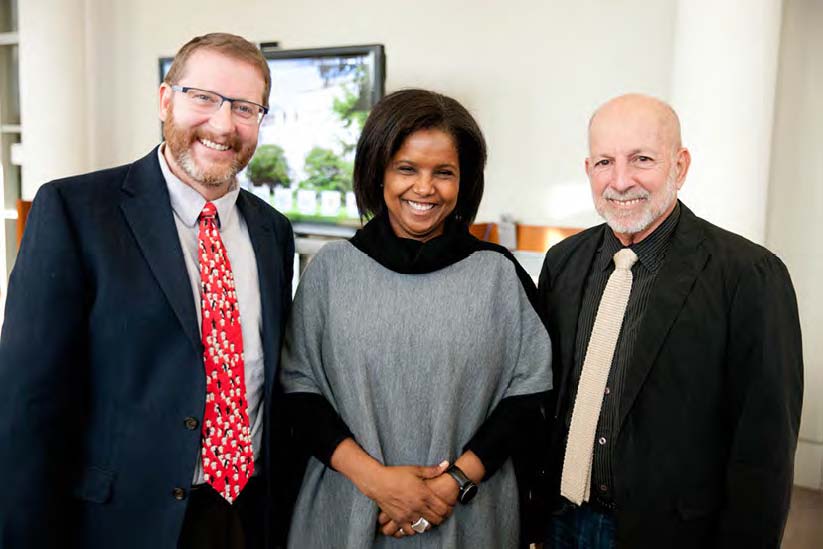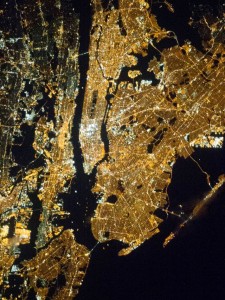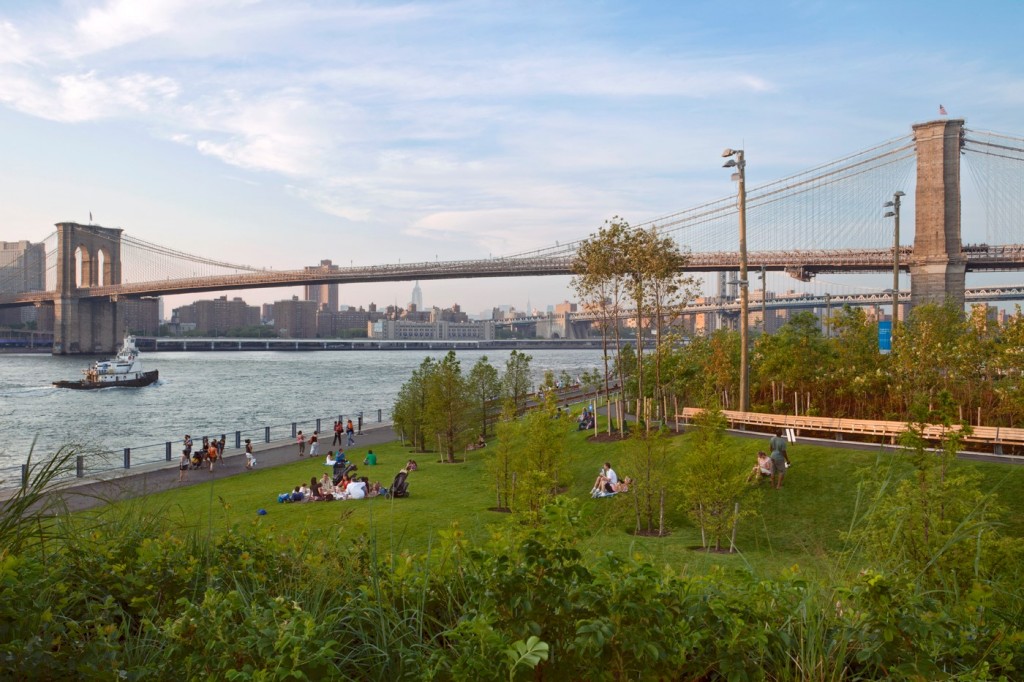Ethical Spaces: Landscapes and Environmental Law
Posted in From the Library, Humanities Institute on April 21 2016, by Vanessa Sellers

On Friday, February 26, 2016, the Humanities Institute hosted the colloquium Ethical Spaces: Landscapes and Environmental Law. Promoting innovative thinking about the rapidly urbanizing world we live in, the discussion centered on land, law, and ecology, focusing on the four classic elements—air, earth, fire, and water. Featuring three experts from Fordham University, the discourse ranged from bird migration (air) to legal ramifications of land ownership and social vulnerability (earth, fire) and the many challenges facing New York City’s waterfronts (water).
The Reader’s Room in the Mertz Library was filled to capacity with eager participants, who had already been made aware of the afternoon’s topic in an article by Patrick Verel, “Is a Livable Urban Environment for All Possible,” published in the Fordham Newsletter a week before the event.
The first speaker, J. Alan Clark, Ph.D., J.D., Associate Professor, Program Coordinator—Conservation Biology, of the Department of Biological Sciences, Fordham University, spoke about Bird Migration through Urban Landscapes. Clark explained how many migratory bird species are in serious decline, and understanding how birds navigate increasingly large, brightly lit, and noisy urban landscapes is essential to their conservation. Clark uses radar, acoustic recordings, and flight tunnels to explore bird migration through urban landscapes. He and his students study how migrating birds use urban green roofs, too. With an increased understanding of urban bird migration ecology, Clark explained, we can develop and implement measures that help reduce hazards presented by cities and address the ethical challenges of a landscape increasingly hostile to wildlife. Specialized in songbird migration in the New York City area, Clark opened his talk with startling statistics: migration is in serious decline, affecting some 60% of all birds and 75% of species.

Clark tracks night migration–less wind at night favors migratory birds–with radar studies using bird calls to assess the dangers posed by artificial light and buildings. While Central Park records show an increasing number of migratory species, other urban areas can trap birds among glass high-rises; many lose their life flying against communication towers and high tension wires. In spite of this, Clark remains optimistic, citing the magnitude of the number of birds migrating through NYC, indicating that urban places and birds can beneficially co-exist. His research also shows that urban sites do not unduly stress birds, provided there are parks and greenspaces, and that even non-native plants are useful food sources. Migration is hard work, however, and Clark outlined our ethical duty to ensure that we continue to improve conditions, such as installing green roofs and adapting outdoor lighting, for migratory birds.
Sheila Foster, University Professor; Albert A. Walsh Professor of Law; Faculty Co-Director, Fordham Urban Law Center, spoke about The City as a Common Good. “Much like the natural environment, the urban environment is subject to disproportionate consumption, through economic and cultural domination of its resources—depriving the less well-off of many goods necessary to survive and thrive,“ Foster explained. She also referred to the encyclical Laudato Si’, in which Pope Francis stressed that the natural environment is a “collective good”—a resource shared by all of us—warning of the disproportionate use of natural resources worldwide.
Foster focused on the city as a resource, and asked: why not think about cities the same way we do great natural spaces, like the Grand Canyon? Cities need resources to survive just as natural spaces do, and just like natural areas, over-exploitation of cities—particularly the disproportionate consumption of goods—leads to degradation. Citing the city as a “common good” in which all residents share its resources, Foster asked how these resources are to be managed in an increasingly urban world. Foster’s focus on environmental justice has led to a more polycentric decision-making model: more collaborative assessments are made involving the whole community. As cities grow, the question of who decides how to allocate resources will become more pressing, bearing down upon the common good.
Roger Panetta, Visiting Professor of History at Fordham, asked “Whose Waterfront?” in a discussion of issues relating to the reconstruction of the Brooklyn waterfront, an example of the newly appreciated relationship of the city and its waterways.

“Maritime New York has been rediscovered as the intellectual and cultural underpinning for the radical transformation of the city’s waterfront,“ Roger Panetta then explained. He pointed out that the process of waterfront renewal is an international phenomenon, which has caught the eye of politicians, planners, and the public alike and drawn a remarkable concentration of civic energy to waters’ edges. The future shape of many cities, certainly New York, is being worked out in the planning schemes of architects, community groups, and legislatures as they hatch new designs for discarded waterfronts. New York is, and has been from its earliest stirrings, a liquid city, tethered to its rivers as commercial avenues and now is rediscovered as a source of recreation and engagement with nature. Panetta focused on Brooklyn Bridge Park and the intertwined ethical assessments made as the site developed—the “ethical moments” in which decisions influenced the whole site. Panetta highlighted the “sense of island-ness” that many New Yorkers did not have until 9/11 or Sandy, as a catalyst to reimagine New York as a liquid city.
The Robert Moses legacy of the circumnavigation of Manhattan with roads, cutting people off from the water; the death of the Brooklyn waterfront in the 1950s as containerized loading moved to New Jersey; and the subsequent separation of waterfronts, ports, and residents led to a decline of the waterline. New works now embrace the waterfront, but Panetta questioned why the work focuses on the edge, where land meets water, and does not fully embrace the new topographies of flood zones and inland areas. This “playing with the hard edge” of water plus land has brought little integration of climate change policies, particularly that of rising sea levels and the need for permeable areas. This disconnect, as Foster also stressed, arises from those controlling the decision-making. The response is for us to make sure that urban spaces and water fronts are seen as common goods. We have to develop ethical sensibilities that foster collective decision making, clarifying for whom we are building our cities.
Support for the Humanities Institute is provided by The Andrew W. Mellon Foundation.

